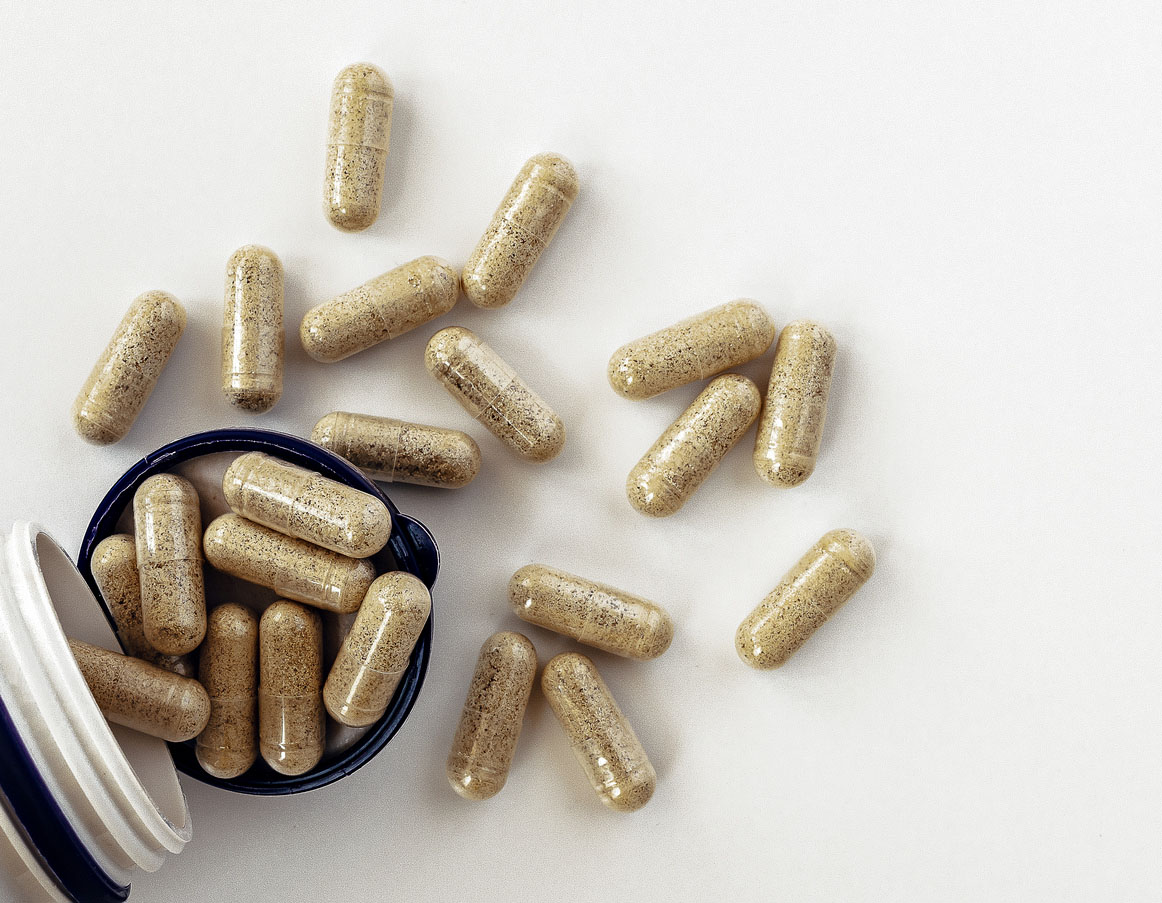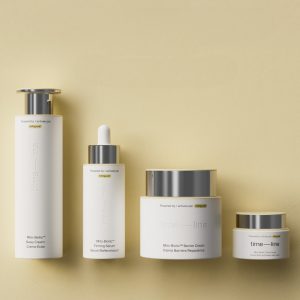Nutritional support can offer profound beneficial effects on inflammatory bowel diseases. The steps to addressing IBD include dietary modification, elimination of intestinal health antagonists, probiotic supplementation and targeted supplementation.
The Specific Carbohydrate Diet (SCD)
The principles of the specific carbohydrate diet began to take shape in 1951 after years of clinical research by Drs. Sidney and Merrill Haas. This research was continued by Elaine Gottschall, M.Sc, and published in 1985 in the journal Acta Anatomica (123:178). The basics of the diet are to avoid specific carbohydrates that may not be digested in individuals with inflammatory bowel diseases, resulting in malabsorption of specific carbohydrates, fermentation, overgrowth of bacteria, increased bacterial by-products and mucus production. This results in direct inflammation and damage to the intestinal lining. The carbohydrates to be avoided are usually disaccharides, which are two simple sugars bound together. Specific foods must be avoided to prevent the ingestion of these carbohydrates. Foods to avoid include all grain products, potatoes, yams, parsnips, chickpeas, soy, bean sprouts, sugar in all forms (except honey), milk and lactose containing foods.
The SCD program also should focus on reducing omega-6 fats, increasing omega-3 fats and medium chain triglycerides, and include the elimination of foods and substances that may negatively challenge gastrointestinal health.
Intestinal health antagonists
1. Microparticles
Back in February 2001, a study in the European Journal of Gastroenterology & Hepatology presented groundbreaking information that soil residue and ingredients in processed foods could initiate an exacerbation of intestinal symptoms in patients with Crohn’s disease. Thus, an avoidance of these substances could actually improve the intestinal health of patients with Crohn’s disease. The study focused on what are called microparticles. The most common microparticles are titanium dioxide, aluminosilicates, anatase and naturally occurring calcium phosphate.
Items to avoid that may contain microparticles:
Ready made meals (frozen foods, TV dinners, complete microwave meals), processed meats/fish and Egg Beaters.
Tea/coffee whiteners (such as non-dairy creamer), flavored milk products, mozzarella/cottage and processed cheese.
Skins from fruits and vegetables with soil residue, fibrous skins and dried/candied fruit.
Whole grain flour or bread, refined flour, breakfast cereals, instant noodles and bakery products.
Icing, sugar, lemon curd and confectionary products.
Processed sauces, sea salt, soft drinks and spices with anti-caking agents.
Soft drinks and instant hot drinks.
Calcium supplements containing calcium phosphate or calcium triphosphate.
Toothpastes that contain titanium dioxide or carrageenan (read the labels carefully).
Check labels on OTC pharmacy products, supplements, toothpaste and mouthwash to make sure they do not contain titanium dioxide, aluminosilicates or anatase.
2. Carrageenan is classified as an algal polysaccharide produced from seaweed. Its safety for human consumption was questioned in 1982 after it was discovered that it could injure the intestines of laboratory rats. Animal studies have shown that sulfated polysaccharides, such as carrageenan, increase hydrogen sulfide production. Hydrogen sulfide production inhibits the metabolism of butyric acid and other short-chain fatty acids, which in turn starve colonocytes and induce lesions similar to ulcerative colitis. Avoiding sulfate consumption from preservatives such as sulfites and sulfur dioxide may be beneficial for IBD patients.
Carrageenan is ubiquitous in our food supply and can be found in all sorts of alternative milk products such as soy milk, rice milk, grain milks, Rice Dream, Soy Dream, tofu products, veggie burgers, soups, cereals, baked goods, toothpastes and supplements. The worst offender is the herb Irish moss because it is pure carrageenan.
3. Monosodium glutamate has been shown to induce diarrhea and exacerbate symptoms associated with irritable bowel syndrome, Crohn’s disease and ulcerative colitis. Definite sources of MSG include hydrolyzed protein, sodium caseinate or calcium caseinate, autolyzed yeast or yeast extract.
4. Dietary allergies must be identified and eliminated from the diet.
Possible pathogen association to IBD pathology
Pathogens with potential association with ulcerative colitis and Crohn’s disease include Escherichia coli, Diplostreptococcus, Campylobacter, Clostridium difficile, Fusobacterium necrophorum, Shigella spp., Salmonella, Helicobacter hepaticus, RNA virus, Bacteroides vulgatus, Mycobacterium avium subspecies, Lymphogranuloma venereum (LGV), non-LGV Chlamydia, Gonorrhea Tuberculosis, Measles virus and Yersinia spp. Bowel lesions seem to occur more frequently in areas of the colon that have high bacterial concentration.
Prebiotics and probiotics in IBD
Modification of the microflora by prebiotics, probiotics and herbal compounds with antibiotic characteristics may be a rational approach for controlling intestinal inflammation.
One of the most studied probiotics is Lactobacillus GG. Children (median age, 14.5 years) with mildly to moderately active Crohn’s disease despite therapy with prednisone and immunomodulatory drugs (such as 6-mercaptopurine, azathioprine or methotrexate) were given Lactobacillus GG twice a day for six months. The median pediatric Crohn’s disease activity index score at four weeks was 73 percent lower (better) than at baseline, and three patients had a score of less than 10, indicating inactive disease. In some patients it was possible to taper the dose of prednisone by an average of 50 percent after 12 weeks of Lactobacillus GG treatment. Intestinal permeability, measured by a double sugar permeability test, improved in an almost parallel fashion. The researchers concluded that Lactobacillus GG may improve gut barrier function and clinical status in children with mildly to moderately active Crohn’s disease.
A study published in the February 2005 issue of the journal Gut found that administration of a probiotic and a prebiotic to patients with ulcerative colitis improved inflammatory symptoms and helped regenerate epithelial tissue. Researchers from Ninewells Hospital Medical School in Dundee, Scotland gave the freeze-dried probiotic Bifidobacterium longum combined with a prebiotic consisting of a mixture of fructooligosaccharides and inulin to eight patients with ulcerative colitis, while eight patients with the disease received a placebo. Sigmoidoscopic examinations were conducted and rectal biopsies were obtained before and after the one month treatment period.
It was found that consuming the probiotic/prebiotic combination was associated with a reduction in mucosal inflammation ascertained via sigmoidoscopy, while the placebo group worsened. Inflammatory cytokines tumor necrosis factor alpha and interleukin-1 alpha were significantly reduced in the treatment group. The biopsies also revealed regeneration of epithelial tissue in those who received the probiotic.
E.coli (Nissle strain 1917) was as effective as mesalazine in preventing relapse of ulcerative colitis for 116 patients and again in 120 patients via two double-blind studies.
Germinated barley food-stuff (GBF) is an insoluble mixture of glutamine-rich protein and hemicellulose-rich dietary fiber. GBF is utilized efficiently by Bifidobacterium, Lactobacillus and eubacterium and converted by them into lactate, acetate and butyrate. In clinical studies, GBF has attenuated intestinal inflammation in patients with ulcerative colitis and experimental colitis models through prebiotic actions.
The aim of one study was to compare the effect of GBF with that of probiotics and antibiotics in an experimental colitis model. Colitis was induced by feeding male SD rats with a diet containing 3.0-3.5 percent dextran sodium sulfate (DSS). The therapeutic effect of oral administration of a prebiotic (GBF), probiotics (mixture of lactobacillus and Clostridium butyricum), antibiotics (vancomycin, metronidazole) and the vehicle was determined by assessing clinical and pathological scores on day 6 after initiation of colitis. Butyrate concentrations in the cecal content were also determined. GBF treatment significantly reduced colonic inflammation as assessed by clinical scores with an increase in cecal butyrate levels. Probiotic treatment with a mixture of lactobacillus and Clostridium butyricum did not show such an effect. Both antibiotic treatments significantly attenuated clinical and pathological scores. However, in contrast to GBF, this treatment led to a significant decrease in cecal butyrate levels. These data suggest that modification of the intestinal microflora by prebiotics, including GBF, may serve as a useful adjunct in the treatment of ulcerative colitis as well as antibiotic treatment.
Venturir and colleagues reported that a 1 year, twice daily probiotic regimen containing Bifidobacteria and lactobacilli and Streptococcus thermophilus was well tolerated and helped maintain remission in 15 to 20 patients with ulcerative colitis. Similar data was presented for maintenance of remission of chronic pouchitis.
One of my favorite good guys of the gut is actually “good yeast.” Saccharomyces boulardii is good yeast that has been studied extensively for intestinal diseases and symptoms of IBD. It is wonderful for controlling diarrhea, especially if Clostridium difficille is the cause. Saccharomyces boulardii releases a protein that interferes with the binding of toxin A secreted by C. difficile to its receptor.
In a randomized placebo-controlled trial, Saccharomyces boulardii in combination with vancomycin or metronidazole reduced the relapse rate by 50 percent and was well tolerated.
Thirty-two patients with Crohn’s disease in clinical remission were randomly assigned to receive one of the following for 6 months: 1) mesalamine (1 g 3 times per day) or 2) mesalamine (1 g 2 times per day) plus Saccharomyces boulardii (1 g in the morning). Clinical relapse, defined as a Crohn’s disease activity index greater than 150 with an increase of 100 points over the baseline value for more than 2 weeks, occurred in six of 16 patients (37.5 percent) receiving mesalamine alone and in 1 of 16 patients (6.25 percent) receiving combination therapy (p=0.04).
Many doctors have reported improvements in patient’s IBD symptoms after initiating anti-fungal therapy, which may include anti-fungal herbs, probiotics and anti-fungal medication.
Fatty acids: short and long chain
Short-chain fatty acids, such as butyric acid, propionic and acetic acids, are produced in the colon by fermentation of fiber. Butyric acid provides the primary fuel of colonocytes. Impaired metabolism of short-chain fatty acids has been implicated as a possible factor for IBD. Larch arabinogalactan has been shown to increase butyrate formation. Butyric acid enemas are often recommended to patients with IBD.
Fish oils may be a useful therapeutic agent in the management of IBD. Studies on the use of dietary supplements of fish-oil-derived long-chain fatty acids have indicated a beneficial effect on inflammatory bowel disease (Ross 1993; Steinhart 1997; Almallah et al. 1998). Many published studies suggest that marine fish oil supplements, which are rich in omega-3 fatty acids, may reduce the inflammation associated with ulcerative colitis and Crohn’s. Fish oils may exert their anti-inflammatory effects by modulating tissue levels of certain immune factors that promote inflammation. In prospective, randomized and controlled studies, omega-3 fatty acids have been shown to be therapeutically useful (Hillier et al. 1991; Aslan et al. 1992). Studies also show that fish oil reduces the doses needed of steroid drugs (Hawthorne et al. 1992; Grimminger et al. 1993; Williams 1993).
Oxidative stress
Patients with ulcerative colitis and Crohn’s disease show signs of increased oxidative stress in the intestinal mucosa, which may be secondary to inflammation. Mucosal biopsies have been shown to have increased reactive oxygen intermediates, DNA oxidation products (8-OhdG) and iron in inflamed tissue.
In an interesting study, plasma antioxidant levels were measured in patients with ulcerative colitis and Crohn’s disease. In both cases, plasma levels of vitamins A and E and several carotenoids were very low compared to control groups. There is a theory proposed by researchers that may explain the increased oxidative stress in patients with inflammatory bowel disease. Tumor necrosis factor alpha (TNF-a) production leads to the production of reactive oxygen species (ROS), which in turn activates Nuclear Factor-Kappa B (NF-kB), which then enhances more TNF-a production, feeding the vicious cycle of ROS production.
Worm therapy
It may sound revolting, but scientists say drinking a concoction containing thousands of pig whipworm eggs could protect people against bowel disease. Early trials of the drink called TSO, developed by German company BioCure, suggest it can dramatically reduce the abdominal pain, bleeding and diarrhea associated with inflammatory bowel disease (IBD).
BioCure hopes to have TSO approved by regulators and on the market in Europe by May 2005. Some scientists have long believed that the eradication of worms from human stomachs over the past 50 years may be behind the rise in IBD. Dr. Weinstock, a gastroenterologist at the University of Iowa, came up with the TSO idea after noticing that a rise in IBD cases coincided with a drop in infections caused by roundworms and human whipworms. IBD is rare in developing countries where parasitic infections are more common. When TSO was tested twice a month on 100 IBD patients, symptoms such as abdominal pain, bleeding and diarrhea disappeared. Fifty percent of patients with ulcerative colitis and 70 percent of Crohn’s sufferers went into remission.
Digestive disease specialists at the University of Iowa are now organizing additional clinical trials to gain additional data and knowledge about this potential treatment of inflammatory bowel disease. Worm therapy is not being used as a routine clinical treatment for patients with inflammatory bowel disease. The encouraging results of the initial research must be tested and substantiated by further research. Researchers are only using this agent under a strictly controlled research protocol. Bottom line: It is not ready for prime time.
Part II
The vitamin D connection
The standard treatment for inflammatory bowel diseases such as Crohn’s and ulcerative colitis is through steroids, which help reduce the inflammation. However, they can cause bleeding and osteoporosis later in life.
Vitamin D deficiency may be more common in people who have inflammatory bowel disease. Vitamin D deficiency may worsen the symptoms of Crohn’s disease, but it’s still unclear whether lack of the vitamin could be a cause or simply an effect of the disease.
In a study, genetically engineered mice set to develop Crohn’s disease and ulcerative colitis were divided into two groups. Half were starved of vitamin D in their diet, while the other half were given a supplement. The treated mice not only had less bowel inflammation but also survived when the untreated mice started dying after only a few weeks.
The research team pointed out other factors, which might suggest a link between IBD and vitamin D. Rates of IBD are higher in North America and Northern Europe, which receive less sunlight. However, a UK expert questioned whether vitamin D was the principal factor behind the high rates of Crohn’s disease. Dr. Nick Thompson, a consultant gastroenterologist, carried out a study of 250 Crohn’s patients and found only three who could be classified as vitamin D deficient. He also pointed out that rickets has virtually disappeared in recent years, while Crohn’s has soared.
It is interesting to note that patients with Crohn’s disease may actually have high levels of vitamin D in their blood, indicating risk for toxicity if they took additional vitamin D. It may not be the best idea to start prescribing vitamin D for patients without testing 25-hydroxy vitamin D levels. As Abreu’s team explains in the medical journal Gut, under certain circumstances too much active vitamin D can actually contribute to the breakdown of bone, leading to osteoporosis. In that same journal, researchers found “inappropriately high” blood levels of the active form of vitamin D in 42 percent of the 138 people they studied with Crohn’s disease. This was true of only 7 percent of 29 patients with ulcerative colitis. In addition, the higher the blood levels of active vitamin D in Crohn’s patients, the lower their bone density—regardless of whether they were treated with steroids. The researchers believe that high vitamin D levels are most likely a manifestation of the underlying gut inflammation. Immune system cells produce vitamin D as part of the immune response. (Vitamin D is required for cell differentiation.)
Bottom line: get a 25-hydroxy vitamin D blood test for patients with Crohn’s or colitis. It seems that colitis patients are better candidates for medically supervised vitamin D therapy.
Say no to NSAIDS
It is already known that people with IBD should avoid ibuprofen (like Motrin, Advil and Nuprin). Now researchers think other anti-inflammatory drugs such as Ecotrin and anything containing aspirin should be avoided as well. A study published in the August The American Journal of Gastroenterology takes the position that people with IBD should not take non-steroidal anti-inflammatory drugs. Taking an NSAID may exacerbate existing disease or even cause the onset of IBD in persons who are predisposed.
One studied that queried sixty patients that were hospitalized for serious flare-ups of IBD found that one-third of the patients had marked flare-up with the use of NSAIDs.
What about erythema nodosum?
Skin disorders are a common extra intestinal symptom of IBD, occurring in up to 25 percent of people with ulcerative colitis and Crohn’s disease. Some of these skin conditions are pyoderma gangrenosum, aphthous ulcers and erythema nodosum. Erythema nodosum is a skin condition that most often affects people with Crohn’s disease but also can develop in those who have ulcerative colitis. Corrections of nutrient deficiencies and administration of olive leaf extract, fish oil and probiotics have helped patients to reduce the incidence of skin disorders during IBD therapy.
Kidney stones and IBD
Many patients with IBD also are hyperoxaluric, suggesting that excess oxalate may be a complicating factor in the disease or may lead to increased risk of kidney stones.
At the institute of Urology in Milano, Italy, researchers analyzed the frequency of renal stones in patients with chronic inflammatory bowel disease and their urinary patterns. During a 20-year period, 1,941 consecutive patients with renal stone disease underwent routine laboratory procedures including a fasting blood sample for chemistry profile and a 24-hour urine collection for analyses of electrolytes.
Urinary oxalate excretion was significantly higher and urinary citrate lower in stone patients with ileal disease than in idiopathic stone formers and stone patients with ulcerative colitis. Urinary volume was significantly lower in patients with ulcerative colitis. The researchers concluded that malabsorption associated with ileal disease causes increased oxalate absorption by increasing oxalate solubility in the intestinal lumen and permeability of the colonic mucosa. A reduced citrate excretion is associated in relation to mild acidosis due to the loss of bicarbonate in the liquid stool. In ulcerative colitis, especially if an ileostomy is present, urine is scanty and concentrated, and urine pH falls, leading to uric acid or mixed stones. Diet strategies may include a low oxalate diet, thus the Specific Carbohydrate Diet would have to be adjusted to reduce total oxalate.
Nutrient deficiencies
Vitamin K deficiency and low plasma vitamin E is common in patients with IBD. In an Australian study, biopsies of colon tissue revealed low levels of reduced ascorbic acid. Calcium, magnesium, iron, carotenoids, biotin, B1, B2, B3, B12, folic acid and selenium are common deficiencies for the IBD patient. Zinc and copper balance is usually disrupted in IBD. Zinc status is important in maintaining enzyme function of metallothionein and ROS reduction. Copper levels may actually increase, thus increasing ROS activity. Be very careful when you replete iron. Remember that ROS production is a major player in the etiology of IBD and iron is a pro-oxidant. An attempt to avoid iron supplements should be made unless absolutely necessary.
Supplementation
EGCG, an extract of green tea, may help reduce inflammation associated with Crohn’s disease and ulcerative colitis. In addition, green tea appears to be helpful for preventing colon cancer; this would be an added benefit for those with IBD because they are at a higher risk for the disease. Scientists determined that EGCG can inhibit interleukin 8, a pro-inflammatory cytokine. Researchers believe their results require further study, and trials are currently under way.
L-Glutamine is an amino acid that is the main source of energy for the mucosal cells that line the intestines and helps them heal. Dosage is adjusted for each patient. The common dose range is six to 25 grams divided into 3 doses per day, 30 minutes before meals. Dr. Alan Gaby reported in the Townsend Letter for Doctors and Patients (October 2001, p 19, based on J Parenter Enteral Nutr 2000;24:196.) that glutamine may increase T-cell attack in Crohn’s disease. In the Crohn’s patient glutamine also may be metabolized into citrulline, which is converted to arginine, a substrate for nitric oxide synthesis. Excessive nitric oxide has been shown to contribute to tissue injury and inflammation in Crohn’s disease. L-Glutamine seems to be effective in treating ulcerative colitis.
Lactobacillus GG is a strain of beneficial flora that is extensively researched in gastrointestinal health, discovered by Drs. Gorbach and Goldin of Tufts University. Dosage: 1 capsule (10 billion cells), twice per day, away from food.
Essential formulas probiotic supplement contains 12 strains of live lactic acid bacteria in a bovine free, enteric coated, vegetable capsule made entirely of vegetable gum (agar agar) and a derivative of cellulose made from plant fiber. There is an enormous amount of clinical research supporting this probiotic.
Boswellia serrata at the dose of 900mg was found to reduce the symptoms associated with both Crohn’s and ulcerative colitis in a small clinical trial.
Curcumin supplementation has been shown to result in a reduction in myeloperoxidase activity, a reduction in the number of infiltrating neutrophils as well as a reduced expression of IL-1 in IBD patients. Dose range is 650mg to 1,300mg three times per day.
Pure sources of EPA and DHA, which have been shown to reduce inflammation in the gastrointestinal tract, might be better tolerated if enteric coated in some cases. Dose range is usually 2 to 9 grams daily.
Mixed tocopherol vitamin E should be used as part of an antioxidant program, at the dose of 400 IU soft gels twice per day will meals.
Folate, an important nutrient that is normally lacking in inflammatory bowel disease due to depletion by medications, poor intestinal health and malabsorption, must be supplemented. Common dosages are 1 to 5 mg daily.
Herbal preparations containing Taraxacum officinale, Hypericum perforatum, Melissa officinalis, Calendula officinalis and Foeniculum vulgare may be beneficial for IBD. A small study on 24 patients with colitis revealed a complete resolution in pain and diarrhea in 23 patients after 15 days.
Quercetin has been found to counteract glutathione depletion, and reduce adhesions and surface damage in colonic tissue in the rat model of induced colitis. Standard dose in IBD is 500mg, three times daily.
In clinical research, methylation, which plays an important role in sulfide detoxification of colonocytes, may be enhanced with methyl donor supplementation. Research focusing on L-methionine and a very stable form of SAM-e (S-adenosylmethionine 1,4 butane disulfonate) may have therapeutic value in ulcerative colitis. Many patients with IBD also have hyperhomocysteinemia, which is an indication of inadequate methylation.
DHEA is usually very low in patients with IBD, partially because DHEA levels are usually suppressed in inflammatory conditions and as a casualty of steroid therapy.
Melatonin reduced symptoms of IBD in animal studies by acting as an assistant to the transportation of electrolytes across cell membranes and as an anti-sposmodic. In an in-vitro study, large doses of melatonin inhibited TNFa induced mucosal addressin cell adhesion molecule, which is believed to be involved in inflammation associated with IBD. Keep in mind that much like serotonin, levels of melatonin in the gastrointestinal tract greatly exceed those that are in the brain.
Phosphatidylcholine has been used to prevent stricture formation of colonic tissue in animal studies. Phosphatidylinositol seems to exhibit similar effects. In an animal study, PI, just like PC, resulted in significant mucosal recovery and decreased permeability of gut tissue in rats with acetic acid induced colitis.
Compounds that may be beneficial in IBD but require more study include bromelain, sterols and sterolins,transfer factors, ginkgo biloba (by inhibition of platelet-activating factor, which mediates mucosal inflammation), Peumus boldus, N-acetyl-glucosamine, aloe polysaccharide extract, white fish peptides and butyric acid enemas.
Nutritional intravenous therapy is essential for the IBD patient. Formulations should be calculated for osmolarity to assure patient comfort and tolerance. Vitamin C should be part of the formula since this is the preferred way to administer this nutrient in the IBD patient. Following an IV with a separate glutathione drip will help reduce the ROS burden in the IBD patient.
Psychological impact of Crohn’s disease
According to a survey of people with Crohn’s disease titled “Voices of Crohn’s,” 60 percent of people with Crohn’s between the ages of 18 and 34 have been hospitalized within the last two years and more than half have required surgery within the past five years. Nevertheless, more than half of the people surveyed still find that their employers, families and friends underestimate the effect of the disease on their daily lives.
The survey was conducted by Manhattan Research, a marketing information and services firm, on behalf of Crohn’s & Colitis Foundation of America (CCFA) and the Digestive Disease National Coalition (DDNC), and was sponsored by Centocor, Inc. It revealed the impact of the symptoms of Crohn’s, including unpredictable and persistent diarrhea, fever and severe abdominal pain, on the physical, social and emotional well being of people with the disease. A subanalysis of those surveyed focused specifically on the adult segment of Generation Y (ages 18 to 27), as well as family relationships and workplace issues, and provides new and comprehensive insight into the debilitating nature of Crohn’s disease.
“Voices of Crohn’s” was designed to increase general understanding of the life altering nature of Crohn’s disease. Through raised awareness about Crohn’s disease, people with Crohn’s may be able to lead more comfortable and fulfilling lives. For more information about the study results, visit www.voicesofcrohns.com.
In summary, many patients reported that it took years to obtain a proper diagnosis and that they had to visit more than one physician, in some cases more than five physicians. Because of the life altering effects of Crohn’s disease ,work productivity, relationships (including the fear of starting one) and family all suffer.
Learn more about the Hoffman Center.
To find out the details for making a first visit, call the Hoffman Center at 212-779-1744 ext. 101.
References for part 1 and part 2:
Miranda C. E. Lomer, Rory S. J. Harvey, Stephan M. Evans, et al, Efficacy and tolerability of a low microparticle diet in a double blind, randomized, pilot study in Crohn’s disease. European Journal of Gastroenterology and Hepatology 2001, 13:101-106.
Gottschall, Elaine, Breaking The Vicious Cycle: Intestinal Health Through Diet, The Kirkin Press, 1994 Canada.
Valhouny, G. and Kritchevsky, D., Dietary Fiber in Health and Disease, Plenum Press, New York, NY, 1982.
Schwartz, George, R. In Bad Taste: The MSG Symptom Complex, Pellum Press, New York, 2000.
Probiotics beneficial for Crohn’s disease Townsend Letter for Doctors and Patients, Nov, 2001 Alan R. Gaby
J Pediatr Gastroenterol Nutr. 2000 Oct;31(4):453-7. Is lactobacillus GG helpful in children with Crohn’s disease? Results of a preliminary, open-label study.
Fukuda M, Kanauchi O, Araki Y, et al. Prebiotic treatment of experimental colitis with germinated barley foodstuff: A comparison with probiotic or antibiotic treatment. Int J Mol Med 2002;9:65-70.
Guslandi M, et al. Saccharomyces boulardii in maintenance treatment of Crohn’s disease. Dig Dis Sci 2000;45:1462-1464.
Gupta P, et al. Is Lactobacillus GG helpful in children with Crohn’s disease? Results of a preliminary, open-label study. J Pediatr Gastroenterol Nutr 2000;31:453-457.
Triadafilopoulos G, Hallstone AK. Acute abdomen as the first presentation of pseudomembranous colitis. Gastroenterology 1991; 101:685-91.
Jacobs NF Jr. Antibiotic-induced diarrhea and pseudomembranous colitis. Postgrad Med 1994; 95:111-20.
Peterson LR, Kelly PJ. The role of the clinical microbiology laboratory in the management of Clostridium difficile-associated diarrhea Infect Dis Clin North Am 1993; 7:277-93.
Fekety R, Shah AB. Diagnosis and treatment of Clostridium difficile colitis. JAMA 1993; 269:71-5.
Anand A, Bashey B, Mir T, Glatt AK. Epidemiology, clinical manifestations, and outcome of Clostridium difficile-associated diarrhea Am J Gastroenterol 1994; 89:519-23.
Brown CH, Ferrante WA, Davis WD. Toxic dilatation of the colon complicating pseudomembranous enterocolitis. Am J Dig Dis 1968; 13:813-21.
Agnifili A, Gola P, Marino M, Ibi I, Carducci G, Verzaro R, Bernardinis G. The role of timing in the treatment of pseudomembranous colitis, a case complicated by toxic megacolon.Hepatogastroenterology 1994; 41:394-6.
Burke GW, Wilson ME, Mehrez IO. Absence of diarrhea in toxic megacolon complicating Clostridium difficile pseudomembranous colitis Am J Gastroenterol 1988; 83:304-7.
Cone JB, Wetzel W. Toxic megacolon secondary to pseudomembranous colitis. Dis Colon Rectum 1982; 25:478-82.
Boland GW, Lee MJ, Cats AM, Gaa JA, Saini S, Mueller PR. Antibiotic-induced diarrhea specificity of abdominal CT for the diagnosis of Clostridium difficile disease. Radiology 1994; 191:103-6.
Drapkin MS, Worthington MG, Chang TW, Razvi SA. Clostridium difficile colitis mimicking acute peritonitis. Arch Surg 1985; 120:1321-2.
Morris JG, Shay DK, Hebden JN, McCarter RJ, Perdue BE, Jarvis W, et al. Enterococcus resistant to multiple antimicrobial agents, including vancomycin: establishment of endemicity in a university medical center. Ann Intern Med 1995; 123:250-9.
Morris LL, Villalba MR, Glover JL. Management of pseudomembranous colitis. Am Surg 1994; 60:548-52.
Olson MM, Shanholtzer CJ Lee JT, Gerding DN. Ten years of prospective Clostridium difficile-associated disease surveillance and treatment at the Minneapolis VA Medical Center, 1982-1991. Infect Control Hosp Epidemiol 1994; 15:371-81.
Ignazio Castagliuolo, Martin F. Riegler, Leyla Valenick, J. Thomas LaMont, and Charalabos Pothoulakis.Saccharomyces boulardii Protease Inhibits the Effects of Clostridium difficile Toxins A and B in Human Colonic Mucosa. Infect Immun. 1999 January; 67(1): 302-307.
Ecker JA, Williams RG, McKittrick JE, Failing RM. Pseudomembranous enterocolitis-an unwelcome gastrointestinal complication of antibiotic therapy. Am J Gastroenterol 1970; 54:214-28.
Trinchieri A, Lizzano R, Castelnuovo C, Zanetti G, Pisani E, Urinary patterns of patients with renal stones associated with chronic inflammatory bowel disease, Gut, 2004.
Akoben AK. Glutamine Supplementation and Intestinal Permeability in Crohn’s disease. J Parenter Enteral Nutr 200;24:196.
B. Salh, K. Assi, K. Parhar, D. Owen, and A. Gomez-Munoz American Journal of Physiology, Gastrointestinal and Liver Physiology, July 2003






